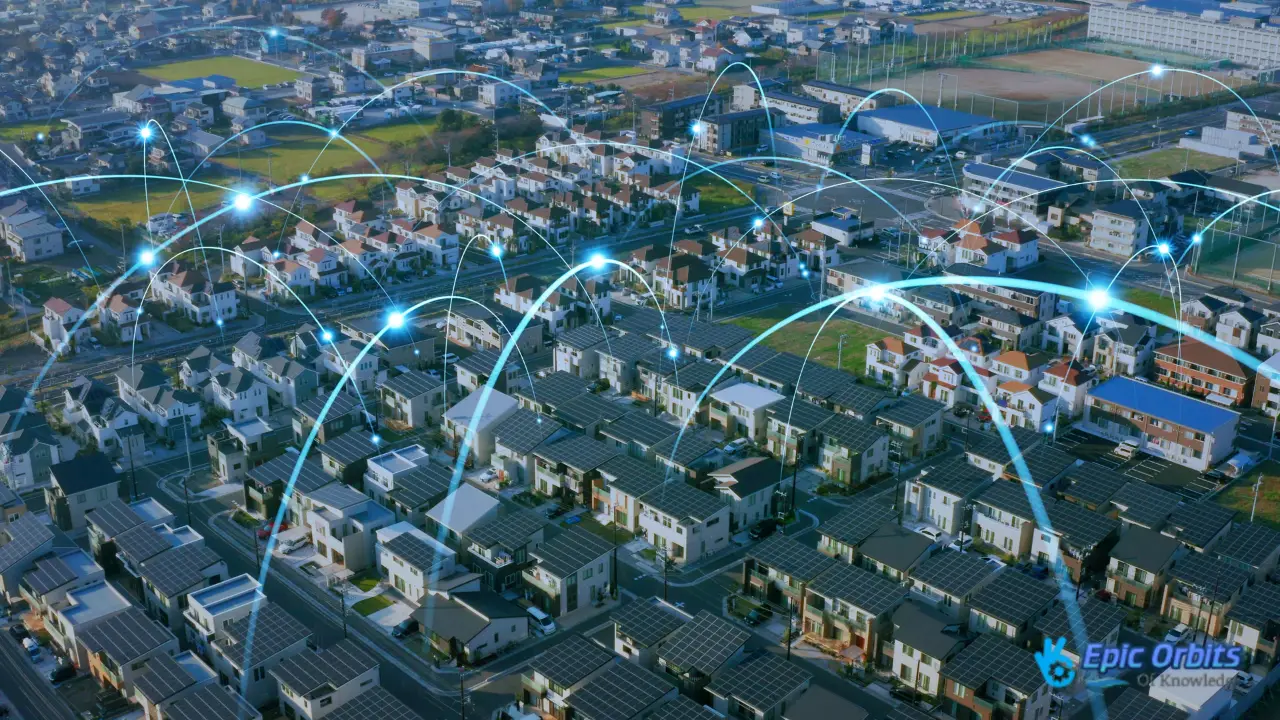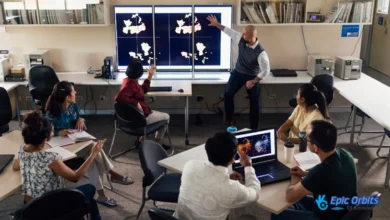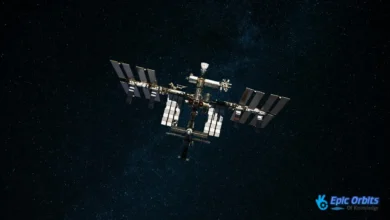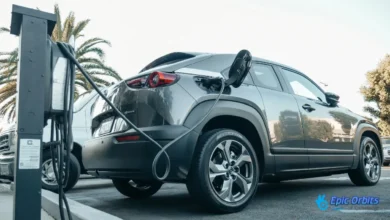How Smart Grids Are Powering the Future
Discover how smart grids are revolutionizing our energy future. Learn the benefits and advancements in our comprehensive guide.

Smart grids are spearheading a significant transformation in the global distribution and utilization of energy. As we rely more on digital tech, a more efficient, reliable, and eco-friendly power system is vital.
Smart grids represent a significant shift from traditional power networks to more adaptable systems that optimize energy utilization and distribution. We can better control the flow of electricity, make the grid more reliable, and help the switch to renewable energy sources by using advanced technologies and two-way communication systems.
What Smart Grids Are and Why They Are Important for Modern Energy
Smart grids are crucial in the search for a better energy system. A smart grid is an electrical network that uses information and communication technology (ICT) to let electricity and information flow both ways between producers, distributors, and consumers.
Everyone on the smart grid receives information on how much electricity is being used and consumed in real time. This interchange of real-time data makes it possible to balance the flow of electricity, which makes the system more efficient, makes it easier to use distributed energy resources, and improves the overall electrical supply system across the grid. Smart grids are very different from traditional power systems since they use ICT to make the energy infrastructure more dynamic and responsive.
Advanced sensors, wireless communication modules, monitoring systems, and strong ICT infrastructures are some of the most important parts of smart grid technology. These parts work together to make an integrated system that can automatically respond to changes in the supply and demand for electricity. This makes the energy distribution network more reliable and efficient.
Smart grids are the basis of today's energy systems, as we can see by learning about them. They make it easier to distribute energy, cut down on waste, and combine different types of energy sources, which makes the energy infrastructure more versatile and adaptable.
How Smart Grids Work: They let two-way communication happen
Smart grids change the old one-way energy distribution model by adding IoT technologies. This makes the energy network more dynamic and interactive. This modernization is crucial for making an energy system that works better and is more responsive to the needs of both producers and consumers.
The Internet of Things (IoT) is an important part of making smart grids since it connects all of the energy infrastructure so that it can be monitored in real time. IoT devices and technology let power grids talk to each other, which makes the energy system more coordinated and responsive. This interface makes it possible to exchange data in real time, which is necessary for efficiently balancing supply and demand.
IoT technology lets us control the energy distribution network more accurately. This not only makes the grid more reliable as a whole, but it also makes it easier to find and resolve problems quickly, which makes the energy infrastructure more resilient.
Smart meters are at the forefront of real-time data interchange, providing us accurate information about when and how electricity is consumed on the network. These meters send information all the time, which helps grid managers make smart choices about how to distribute energy. This method helps keep the network from getting too busy and makes sure that the power supply is safer.
Smart grids enable utilities to monitor electricity distribution in real-time, thereby enhancing their performance. Utilities can make their operations more efficient, cut down on waste, and improve the grid work overall by having access to detailed, real-time data on energy use.
Smart Grids vs. Old-Fashioned Power Lines
As we work toward a more sustainable energy future, the distinctions between smart grids and traditional power networks become clearer. We used a simple “National Grid” model to meet our electrical needs for a long time. This model had a few big power plants that sent electricity over long distances to different places. These plants usually used fossil fuels or, in certain cases, nuclear energy.
Traditional power grids were set up in a hierarchical way and only worked when there was a need for electricity. They didn't have any storage space. Such an arrangement caused things to be less efficient and less flexible. Some of the problems with traditional electricity grids are:
- Traditional electricity grids are dependent on large power plants that run on fossil fuels or nuclear energy.
- Traditional electricity grids rely on a hierarchical framework for one-way distribution.
- The lack of sufficient storage space results in inefficiencies and security vulnerabilities.
- It's challenging to fit in variable renewable energy sources.
These problems show that we need a more contemporary and flexible energy system.
Smart grids, on the other hand, are more connected and flexible, which lets them send and receive data in real time and communicate with each other. The benefits of change include:
- More freedom in how energy is distributed and managed.
- More resistant to natural disasters and power shortages.
- More efficient thanks to real-time monitoring and optimization.
- Better ways to connect renewable energy sources to the grid.
Smart grid technology can help us avoid the issues with current networks and make energy more sustainable.
Smart grids are very important for managing energy
Smart grids make it possible to keep a careful balance between the supply and demand for electricity. Smart grid technologies have many excellent features, but one of the most important is that they can keep the balance between energy supply and demand. This function is critical because storing electricity is difficult, and failing to meet demand can have harmful effects.
Smart grids are essential for keeping the balance between energy supply and demand, which is necessary for the system to be stable and reliable. When people demand electricity, energy companies have to quickly send the right amount of energy to the grid. If there isn't enough energy, the frequency goes down. When it gets too low, a plan to automatically cut back on power use kicks in to keep the lights on.
- Real-time data interchange and monitoring make it possible to quickly respond to changing electrical needs.
- Better planning for energy supply is possible because of advanced forecasting tools that can estimate energy demand.
Electric appliances, electric cars, and digital devices are becoming more common, which is making the need for electricity climb all the time. Smart grid technologies assist in fulfilling this growing need by making the distribution and use of energy more efficient. Energy companies may ensure that electricity is always available by using the smart grid's features.
Smart grids also make it easier to use renewable energy sources by using enhanced forecasting and distribution to address their natural unpredictability and intermittency. This is vital since the world is moving toward cleaner, more sustainable energy sources. Smart grids are essential for reducing our dependence on fossil fuels and fighting climate change because they make it easier to add renewables to the grid.
The main benefits of putting in place a smart grid
Smart grid technology is changing the energy industry by giving both consumers and energy suppliers many benefits. Wise grids offer users accurate information about how they use energy, which helps them make wise choices about how much electricity they use.
Smart grids provide people more control over how they use electricity than ever before. By finding out where they use the most energy, consumers may focus on those areas to cut back on their energy use and save money on their energy bills. For instance, consumers can reduce their electricity consumption by avoiding periods when their devices are in use or charging.
Smart grids let energy companies make tailored electricity plans based on how each client uses energy. This method tailors service options to each customer's needs and budget, resulting in less expensive options. Smart grids also let you use dynamic pricing models that better represent actual energy costs and encourage people to use energy more efficiently.
Smart grids have enhanced monitoring features that make the grid more reliable by letting operators quickly detect and address problems that could affect the whole system before they get worse. Smart grid technologies also make the system safer by allowing remote maintenance, remediation, and control activities that keep the electrical system running smoothly while protecting it from possible threats.
In conclusion, smart grids have many benefits, such as giving consumers more control over how much electricity they use and making the grid more reliable and secure. We can make our energy management system more efficient, long-lasting, and responsive as we keep using these new technologies.
Smart grid apps are changing the way we use energy
Smart grid applications are changing the energy environment in a big way as we move toward a future with more sustainable energy. Smart grids are the best way to address the problems that come with integrating renewable energy, building infrastructure for electric vehicles, and managing energy in a more advanced way.
People typically avoid renewable energy sources like solar and wind power because they are intermittent. Smart grids solve this problem by giving us a strong infrastructure for managing renewable energy sources in an efficient way. Smart grids make sure that the energy supply is consistent and reliable by collecting power when conditions are right and storing it for later use.
| Renewable Energy Source | Smart Grid Benefit |
| Solar Power | Efficient energy storage and management |
| Wind Power | Real-time monitoring and predictive maintenance |
Smart grids are also helping electric cars become more popular by making charging stations work better. These solutions have less of an effect on the grid and may use vehicle batteries as distributed storage resources, which makes the grid more stable overall.
Smart grid technology includes advanced metering infrastructure and household energy management systems. They provide both consumers and utility companies a lot of information about how people use energy, which helps them make better choices. These systems enhance grid performance and stability by automating and optimizing energy usage.
Using these technologies, we can build an energy system that is better for the environment and more reliable, efficient, and sustainable for everyone.
Conclusion
Smart grids are going to change the way we obtain electricity in the future. Smart grids use IoT technology to develop a dynamic model based on intelligence and real-time monitoring. Such an approach makes the power supply more efficient and secure.
We talk about how smart grids can change the way power systems work by making them more efficient, resilient, and long-lasting. Digital technologies have revolutionized the production, transportation, and utilization of electricity by integrating with physical infrastructure.
Smart grids are an important part of our move toward a more sustainable energy future because they make it easier to use more renewable energy sources and make the whole system work better.



